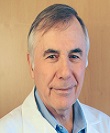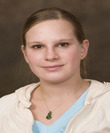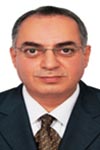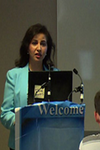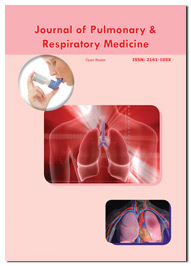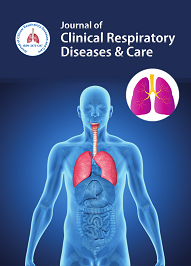Theme: Freedom to Breathe, Starts with the Knowledge
COPD CONFERENCE 2019
Conference Series LLC Ltd. is overwhelmed to invite all the participants across the globe to attend “11th International Chronic Obstructive Pulmonary Disease Conference” in the city of London, UK on November 18-19, 2019. This extraordinary conference revolves around the theme “Freedom to Breathe, Starts with the Knowledge”.
COPD Conference 2019 is a common platform designed for International medical health professionals and pulmonologists to facilitate the dissemination and application of research findings related to COPD. The COPD conference provides a global forum for discussions about new innovations to International scientists, researchers, doctors, young students as well as business professionals related to pulmonology.
Why to attend??
The COPD Conferences will enlighten the world with recent advances in COPD and pulmonology research and inculcate new ideas about healthy breathing. Moreover, this COPD Conferences provides the participants a great networking with peers. Internationally prominent speakers, the novel techniques, and the modern updates in the lung research fields are the unique attributes of this conference. COPD Conferences, symposiums and Workshops provide a dedicated forum for the advancement, execution and exchange of information about Pulmonology and COPD.
COPD Conference 2019 is a hallmark in the era of COPD conferences with its eminent speakers and notable organizing committee members.
Who should attend??
Pulmonologists, Cardiologists, Physicians, Academicians, Academic scientists, Industry professionals, Diagnostic laboratory professionals, Undergraduate & Postgraduate students, researchers, business professionals, Postdoctoral fellows and Trainees, COPD Diagnostics Associations and Societies.
Conference Series LLC Ltd. which organizes 1000+ Global events every year across USA, Europe & Asia with support from 1000 more scientific Societies and Publishes 700+ Open Access Journals which contains over 50000 eminent personalities, reputed scientists as editorial board members is delighted to welcome all the enthusiastic participants across the world to its prestigious COPD Conference named ‘11th International Chronic Obstructive Pulmonary Disease Conference’ which is going to be held during November 18-19, 2019 at London, UK. COPD Conference 2019 highlights the theme “Freedom to Breathe, Starts with the Knowledge”.
Conference Series LLC Ltd. provides an opportunistic environment and vibrant podium through these auspicious events to amplify these steps and meet the highest demand ever, by reflexive connections. Conference Series LLC Ltd has been progressively organizing scientific conferences across the globe, rendezvous which consist of various streams of scientific study to improve and accelerate discovery for a better tomorrow. The non-profit firm plans for organizing an average of 1000 international conferences per year which is supported by 700 open access journals and 80,000 Editorial Board Members. The number of reader views of the website has clocked 7.5 million and still counting. Lately around more than 1000 scientific associations of various fields from all over the world have shown interest in association with Conference Series LLC Ltd. to promote their research work. Conferences Series LLC Ltd offer exciting features like international symposia, B2B meetings, trade shows, exhibitions, and international workshops to build global networking and meaningful academic research and industry alliances. Conference Series LLC Ltd. initiated the 'Young Scientist awards' to the enterprising young science researchers and scholars across the globe.
COPD Conference 2019 provides an excellent opportunity to share views, exchange knowledge and establish research collaborations & networking.
COPD Conference 2019 brings together individuals who have an interest in the field of Respiratory and Pulmonary Diseases relating to diversified topics like COPD, emphysema, asthma, cystic fibrosis, lung cancer, other pulmonary diseases and therapeutics.
Target Audience
- Pulmonologists
- Cardiologists
- Scientists
- Physicians/Consultants/ General Practitioners
- Directors/Managers
- Pathologists
- Presidents & Vice Presidents/ Directors / Administrators
- Business Entrepreneurs
- Pulmonology Pharma Companies
- COPD Associations/ Societies
- Training Institutes
- Young Researchers
- Medical Students
- Nurses
- Residents
- Medical Devices Companies
- Pulmonary Medicine and surgery related Companies
Track 1: Chronic Obstructive Pulmonary Disease
Chronic obstructive pulmonary disease is a chronic inflammatory lung disease that causes obstructed airflow from the lungs. Symptoms incorporate breathing trouble, cough, mucus production and wheezing. It is caused by long-term exposure to irritating gases or particulate issue, frequently from cigarette smoke. Individuals with COPD are at increased risk of creating coronary illness, lung cancer and a variety of different conditions. Emphysema and chronic bronchitis are the two most basic conditions that contribute to COPD. Chronic bronchitis is inflammation of the lining of the bronchial tubes, which convey air to and from the air sacs of the lungs. Emphysema is a condition in which the alveoli at the end of the smallest air passages of the lungs. Pulmonary Conferences provides a multidisciplinary to pulmonology researchers.
Track 2: Asthma and COPD
Asthma and COPD have imperative similarities and differences. Both are chronic inflammatory diseases that include the small airways routes and cause airflow limitation, both outcome from quality condition collaborations and both are normally portrayed by mucus and bronchoconstriction. COPD affects both the aviation routes and the parenchyma, while asthma influences just the aviation routes. Both asthma and COPD include the small airways routes and the structural changes in the small airways routes are in charge of a great part of the physiological weakness that happens in these ailments. Lung Conferences envelop the fields of asthma and COPD which have important similarities and differences.
Track 3: Pulmonary Hypertension
Pulmonary hypertension is a sort of hypertension that influences the arteries in lungs and the right side of heart. In one type of pulmonary hypertension, tiny arteries in your lungs, called pulmonary arterioles, and capillaries become narrowed, blocked or devastated. This makes it harder for blood to move through your lungs, and raises pressure inside your lungs' courses. As the pressure builds, your heart's lower right chamber (right ventricle) must work harder to pump blood through your lungs, in the long run causing your heart muscle to debilitate and fail. In spite of the fact that a few kinds of pulmonary hypertension are not curable, treatment can help decrease symptoms and enhance quality of life. COPD Conferences concentrates on the impact of pulmonary hypertension.
Track 4: COPD Exacerbations
The significant reason for an exacerbation is infection in the lungs (air sacs) or airways (breathing tubes). This infection is frequently from a virus, yet it might likewise happen from microbes or less basic sorts of organisms. Exacerbations can also occur from breathing in irritating substances from the earth like substantial air contamination or from severe allergies. Self-management and prevention for COPD will be advantageous for future exacerbation. COPD exacerbations can be harmful because they can make damage the lungs. COPD, keeping a compounding from happening can enable you to live a healthier life and diminish risk of death. Pulmonary Conferences envision the pulmonology.
Track 5: Lung Cancer
Patients with chronic obstructive pulmonary disease are at increased risk for both the development of primary lung malignancy. Cigarette smoking is the principal hazard factor for advancement of lung disease. Passive exposure to tobacco smoke likewise can cause lung malignancy. Treatment of lung tumor can include a combination of surgery, chemotherapy, targeted therapy, immunotherapy, and radiation treatment and also newer experimental methods. Smoking suspension is the most vital measure that can keep the advancement of lung cancer. Lung Conferences concentrates on the risk factor for development of lung cancer.
Track 6: Pneumonia and COPD
People with COPD will probably create pneumonia. Pneumonia is especially unsafe for individuals with COPD by causing an increased risk of respiratory failure. This is the point at which your body is either not getting enough oxygen or isn't effectively expelling carbon dioxide. Pneumonia and COPD can result in serious complications. Long term and even permanent damage can occur. Early treatment can help decrease these risks. The inflammation from the pneumonia can constrain your airflow, which can further damage your lungs. This can progress into acute respiratory failure, which can be fatal. COPD Conferences enlighten the recent advances in COPD and pulmonology research.
Track 7: Pulmonary Rehabilitation
Comprehensive pulmonary rehabilitation is an imperative part in the clinical management of people with chronic obstructive pulmonary disease. Pulmonary rehabilitation is a program of progressive exercise and education supervised by a physiotherapist for individuals with COPD. At pulmonary rehabilitation, you will also learn about: breathing techniques, medications, nutrition, relaxation, oxygen, travel, how to do ordinary undertakings with less shortness of breath, and how to stay healthy and keep away from COPD exacerbations. Lung Conferences provides global forum for discussion about new innovation of pulmonology research.
Track 8: Tuberculosis and COPD
Tuberculosis and Chronic Obstructive Pulmonary Disease carry about a significant concern in terms of morbidity and mortality around the world. This spotlight on various parts of tuberculosis as far as the association with COPD such as in the advancement of chronic airflow obstruction as a sequel of active tuberculosis and assessing the key role of cigarette smoking in the pathogenesis of both conditions. Patients determined to have tuberculosis may regularly have extensive co-morbidity such as COPD and the impact of an underlying diagnosis of COPD on results in tuberculosis is also reviewed. COPD Conferences explores the new ideas and techniques of pulmonary therapy.
Track 9: COPD Therapeutics
The objective of COPD therapeutics is to improve a patient's practical status and quality by protecting optimal lung function, enhancing indications, and keeping the recurrence of COPD exacerbations. At present, no medicines aside from lung transplantation have been appeared to significantly improve lung capacity or diminishing mortality; however, oxygen treatment and smoking cessation may decrease mortality. Once the diagnosis of COPD is established, it is essential to educate the patient about the disorder and to enable their dynamic interest for treatment. Bronchodilators are the establishment of any COPD treatment regimen. They work by enlarging aviation routes, accordingly diminishing airsac protection. Pulmonary Conferences provides a podium to bring forward the novel therapies for pulmonology.
Track 10: Epidemiology of COPD
Chronic obstructive pulmonary disease (COPD) is a preventable and treatable disease in responsible for human and economic burden far and wide. Cigarette smoking is the basic hazard factor for COPD in the developed world, although other essential respiratory disorder incorporate word related exposures, air contamination, aviation route hyper responsiveness, asthma, and hereditary predisposition. In the vast majority of the world, epidemiology of COPD prevalence and mortality continue ascending in light of increases in smoking addiction, particularly by women and adolescents. COPD is moreover a basic explanation behind incapacity, and is associated with comorbid sicknesses, for instance, depression and cardiovascular disease, which adds to the huge economic burden related with this issue. Better public health and restorative interventions that objective both the hazard factors for COPD and look toward earlier mediation may decrease developing public health impact of COPD. COPD Conferences is an important key for both educational and clinical guidance for managing copd patients.
Track 11: Pathophysiology of COPD
Chronic obstructive pulmonary disease (COPD) is a life-threatening condition. It influences lungs and ability to breathe. The pathophysiology of COPD is the physical changes associated with it; begin with harm to airways routes and the air sacs in lungs. It progresses from a cough with mucus to difficulty breathing. To understand pathophysiology of COPD, it is essential to understand the structure of the lungs. When you breathe in, air moves down in trachea through two tubes called bronchi. The bronchi branch out into smaller tubes called bronchioles. At the closures of the bronchioles are little air sacs called alveoli. Furthermore, toward the finish of alveoli are capillaries, which are modest veins. Pulmonary Conferences articulate the evolutions in the COPD and Pulmonology field.
Track 12: Drug Discovery of COPD
COPD is one of the most common diseases in the world, and there is a global increase in prevalence, but there are no drugs available at present that halt the relentless progression of this disease. However, a better understanding of the cellular and molecular mechanisms that are involved in the underlying inflammatory and destructive processes has revealed several new targets for which drugs are now in development, and the prospects for finding new treatments are good. Lung Conferences will focus on the different techniques used in pulmonology.
Track 13: Genetic risk factor of COPD
Even if an individual has never smoked or been unprotected to pollutants for an extended period of time, they can still develop COPD. Alpha-1 Antitrypsin Deficiency (AATD) is the most commonly known hereditary hazard factor of COPD in emphysema. Alpha-1 Antitrypsin related COPD is caused by a deficiency of the Alpha-1 in the circulatory system. Without the Alpha-1 Antitrypsin protein, white platelets start to harm the lungs and lung deterioration occurs. The World Health Organization and the American Thoracic Society proposes that every individual determined to have COPD be tested for Alpha-1. Pulmonary Conferences also discusses about different types of genes which may be a cause of pulmonary diseases.
Track 14: COPD Complications
Individuals with COPD can be in risk for serious complications that can put their wellbeing in risk, as well as be fatal. Cor Pulmonale of COPD cut down limit edema (swelling) in a patient with COPD Complications is commonly a sign of cor pulmonale (pneumonic hypertension and right-sided heart failure). Acute COPD Exacerbations are depicted by an unexpected addition of manifestations. Cough and sputum production increases. At the point when respiratory failure occurs in a patient who gradually, there is a moderate decrease in lung capacity and rising levels of carbon dioxide in the blood. The growing carbon dioxide has a sedative effect in the patient, who gradually loses awareness and quits relaxing. Different difficulties of COPD incorporate pneumonia, polycythemia, and pneumothorax. Pneumonia caused by bacterial disease can prompt respiratory failure in these patients. Streptococcus pneumoniae is the most outstanding reason behind bacterial pneumonia in patients with COPD. Pneumothorax happens when a hole develops in the lung, empowering air to escape into the space between the lung and the chest wall and collapsing the lung. Polycythemia in COPD is the body's endeavour to adjust to decreased measure of blood oxygen by expanding the generation of oxygen-passing on red blood cells. While this might be useful temporarily, overproduction eventually clogs small blood vessels. Lung Conferences expresses various developing treatments for COPD.
Track 15: COPD and Cardiovascular Diseases
Chronic obstructive pulmonary disease is related with increased risk of cardiovascular disease, for instance, heart failure or a heart attack. The lungs and the heart work solidly together to supply the oxygen; oxygen in the air comes into the lungs is moved into the circulation system, which the heart by then pushes out to rest of the body. However, diseases in both the heart and the lungs regularly go together. If person have COPD at that point there is a higher risk of having cardiovascular diseases. Comorbidities and chronic obstructive pulmonary disease (COPD) are pervasive, with cardiovascular disease being the most notable and significant. Risk factors for COPD and Cardiovascular Diseases such as smoking, low socioeconomic class, and a sedentary way of life contribute to the natural history of each of these conditions. COPD Conferences will focus on the scope of COPD related to cardiovascular diseases.
Track 16: Self-Management and Prevention of COPD
Self-Management and Prevention of COPD interventions assist patients with chronic obstructive pulmonary disease (COPD) acquire and practise the skills they need to carry out disease particular medical regimens, guide changes in health behaviour and provide passionate help to empower patients to control their ailment. Patients with COPD affirmed by spirometry and symptoms and airflow obstruction should be monitored frequently to guide modification of treatment and to distinguish complications early. Pulmonary Conferences will be focused around the self-management support programmes should be collaborative between healthcare professionals and patients, to enable them to secure abilities to understand and manage with their medications and exacerbations of COPD, embrace healthier behaviours and deal with the social-emotional consequences of the disease.
Track 17: Depression and anxiety in COPD
Depression and anxiety in COPD are standard in patients with chronic obstructive pulmonary disease (COPD), evaluations of their pervasiveness differ significantly. These likely reflect the variety of scales and techniques used to measure such symptoms. Patients with COPD with three or more comorbidities more likely to be frequently hospitalized and may die prematurely compared with COPD patients without comorbidities. An uplifted experience of dyspnoea is likely contributing segment to nervousness. Feelings of depression may be precipitated by the loss and grief related with the inability of COPD. Smoking has been related with nicotine addiction, and the variables that contribute to smoking may also predispose to anxiety and depressive disorders. The cause of depression and anxiety manifestations are multifactorial and include behavioural, social and biological factors. COPD Conferences paves a way towards a break-through in pulmonology research field.
Track 18: Pediatric Pulmonary, Critical care and Sleep
A significant part of the pulmonary rehabilitation, research and pneumonic medication goes toward the youngest people from society-the newborns. For instance, the purpose behind pulmonary stenosis is a direct result of inappropriate pneumonic valve enhancement in the initial two months of fetal development. It's congenital but treatable. With a sound pulmonary stenosis diagnosis the heart valve can be replaced or repaired and children can develop normal healthy lives. Sleep apnea affects premature infants. A situation called apnea of prematurity exists when the child doesn't breath for 20 seconds or more. It is a pneumonic disease that can be treated with ventilation machines and medications. COPD Conferences explains about pediatric pulmonary, critical care and sleep which includes Pediatric emergencies, Pneumonia, Respiratory failure, Pediatric in-patient and critical care, Sepsis and Head Trauma & Concussion.
Track 19: Pulmonary diseases-treatment and therapies
There's currently now no solution for chronic obstructive pulmonary disease (COPD), yet pulmonary infections treatment and therapies can help moderate the development of the condition and control the symptoms. Drugs include: quit smoking, inhalers and pharmaceuticals – to help make breathing easier, pulmonary rehabilitation – a particular program of activity and education surgery or a lung transplant – although this is just a possibility for few individuals. A great part of the treatment for COPD incorporates self-management and prevention of COPD. Oxygen treatment can quality of life and is the main COPD treatment demonstrated to expand life. Surgery is a possibility for a few people with a few types of serious emphysema who aren't helped adequately by medications alone. Surgical options include: Lung volume reduction surgery, Lung transplant and Bullectomy. Lung Conferences will disclose the application of different treatments and therapies.
Track 20: Case Report
Chronic obstructive pulmonary disease is one of the leading causes of disability and death worldwide. COPD exacerbation is normally treated with anti-infection agents, systemic corticosteroids, and inhaled bronchodilators. COPD exacerbation was treated with standard treatment. Dynamic expiratory computed tomography of the chest was done, which uncovered associative tracheomalacia. COPD and tracheomalacia may exist together during recurrent exacerbations of COPD, and deferred finding can be related with extreme comorbidities. Ordering the appropriate imaging technique may help in the correct diagnosis and encourage appropriate management. COPD Conferences focus on the modern approaches of Pulmonology.
Summary
Conference series LLC Ltd. invites all the participants through the globe to join at 11th International Chronic Obstructive Pulmonary Disease Conference which is going to held during November 18-19, 2019 at London, UK which will include keynote sessions, Oral presentation, Poster presentation and Exhibitions. The main theme of the conference is “Freedom to Breathe, Starts with the Knowledge” which covers current and developing research on Pulmonology.
For more details please visit: https://copd.insightconferences.com/
Importance & Scope
Chronic obstructive pulmonary disease (COPD) is the fourth leading causes of death in the world. Moreover, among the top five causes of death, this disease is the only one with increasing mortality rates. COPD is an essential public health problem in many countries which is evaluated to become the fifth reason for disability. COPD is a common condition that mainly affects aged or adults who smoke. The condition cannot be cured or reversed, but for many people treatment can help them to keep it under control so it does not affect their daily activities. COPD Conference 2019 is to understand the depth of the disease and proceed for the future research.
The COPD Conference 2019 will discover the new concepts and informative session program including plenary lectures, symposia, workshops on a variety of topics, poster presentations and various programs for participants from all over the world. We delightedly invite you to join us at the COPD Conference 2019, where you will have essential experience with scholars from around the world. All members from COPD Conference 2019 organizing committee look forward to meet you in London, UK.
Why London?
London is the political, economic and cultural capital of England, and its world category tour attractions are known across the world. It is a leading Global City. London is considered as a world cultural capital. It is the world’s most-visited city as measured by international arrivals. The Greater London space is exploding with attractions for guests of all ages. Historic gardens, historic buildings, museums, London Bridge, Palace and The London eye. The Roman engineers referred the town as Londinium on the Thames River within the year AD 43. The town was attacked and destroyed. Then the Romans restored the city as London. The name Londinium then ‘London’ came from the Indo-Hittite of the traditional Britons within the year AD 61. London is the center of the planet – and a world in one town, with a wealth of various cultures and communities across the capital, there are three hundred languages and culinary art from over seventy countries. Whereas English is the official language, many European languages are terribly wide spoken in and around London. Given the scale of the massive doctrine population, several different languages areutilized in standard of living.
Market Analysis Report:
Increasing prevalence of respiratory diseases owing to the growing aging population and increasing pathogens in the environment has been the key factor driving the Chronic Obstructive Pulmonary Disease (COPD) market globally. Pharmaceutical companies have been developing new bio-based medications in combination with bio-technology which promises immense growth opportunities along with sustainable development for COPD market over the next decade.
The global COPD drug market is a multi-billion dollar market which has a history of several decades and has witnessed number of technological advancements and product development over the past few years. Upcoming treatment methodologies such as once-a-day combination products and monoclonal antibodies have created new opportunities for the market growth. The global market for Chronic Obstructive Pulmonary Disease (COPD) prescription drugs was valued at $34.9 billion in 2011. This figure is expected to reach $38 billion in 2012 and $47.1 billion in 2017, growing at a five-year compound annual growth rate (CAGR) of 4.4%. The global COPD market is estimated to currently be worth $11.3 billion, and is forecast to reach a value of $15.6 billion by 2019.
Currently, North America leads the global market for COPD drugs and devices. However, North America and Europe is expected to lose out some of the market share to other emerging regional markets owing to the expiry of several patens of pharmaceutical companies operating in these regions. Asia Pacific is estimated to be the rapid regional market for COPD due to the increased incidence of respiratory diseases in industrial regions.
Figure 1: Regional scope of COPD

A large decrease in COPD mortality rates COPD deaths fell only slightly, from 3 million in 1990 to 2.8 million in 2010 because the mean age of the population increased. The number of COPD deaths in 2010 would have risen to 5.2 million if the age specific mortality rates had remained constant. Changes in smoking led to only a small increase in age specific mortality rates. Global outlines of mortality are changing, mainly due to three related transformations: an epidemiological transition driven by change in global risks, with falling death rates in childhood associated with infectious disease, a demographic transition with more people surviving into later life, and a health care transition with improved efficacy of both preventive and curative or palliative treatments.
Figure 2: Members Associated with COPD
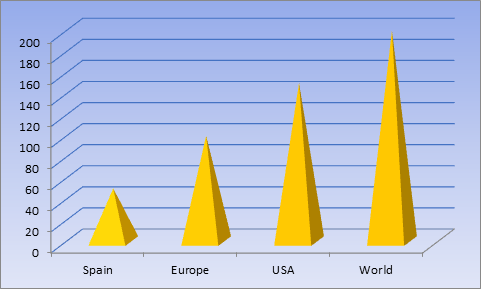
Associations:
In London
Society of Pulmonology and Thoracic Surgery
The World Association for Bronchology and Interventional Pulmonology
In Europe
European Respiratory Society
European Federation of Allergy and Airways Diseases Patient Associations
European Idiopathic Pulmonary Fibrosis & Related Disorders Federation
European Pulmonary Hypertension Association
European Association for Bronchology and Interventional Pulmonology
Cystic Fibrosis Europe
British Lung Foundation
British Thoracic Society
Association for Respiratory Technology and Physiology
The Primary Care Respiratory Society UK
European COPD Coalition
European Lung Foundation
In Worldwide
Algerian Society of Pneumology
Asociación Argentina de Medicina Respiratoria
Thoracic Society of Australia and New Zealand
Austrian Society for Pneumology
Belgian Thoracic Society
Sociedade Brasileira de Pneumologia e Tisiologia
Bulgarian Respiratory Society
Canadian Thoracic Society
Chinese Thoracic Society
Croation Respiratory Society
Egyptian Paediatric Pneumology Society
Forum of International Respiratory Societies
Russian Respiratory Society
Peruvian Society of Pneumology
German Center for Lung Research
Figure 3: Universities Associated with COPD
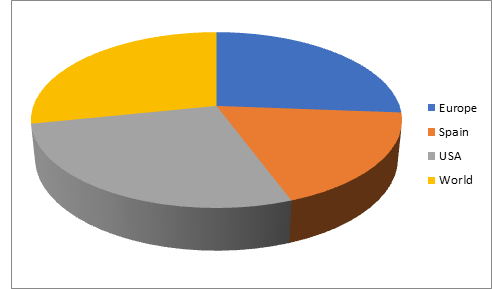
Major Medical universities:
In Europe
University of Nottingham
Imperial College London, United Kingdom
University of Birmingham, United Kingdom
University of Strasbourg
Versailles Saint-Quentin-en-Yvelines University
Albert Ludwig University of Freiburg
Ruprecht Karl University of Heidelberg
Eberhard Karl University of Tübingen
Medical University of Innsbruck
Medical University of Vienna
Belarusian State Medical University
Gomel State Medical University
In Worldwide
Australian National University, Australia
Charles Darwin University Casoria, Australia
Columbia University Medical Center, United States
Curtin University Bentley, Australia
Dar Al Uloom University, Saudi Arabia
Harvard University, United States
Iqbal Chest Centre, Bangladesh
Johns Hopkins University, Maryland
Leiden University, Netherlands
Linnaeus University, Sweden
Maastricht University, Netherlands
Macquarie University, Australia
McGill University, Canada
Medi7 Bent Leigh, Australia
Tufts University, United States
University of California, San Francisco
University of California Los Angeles, United States
University of Colorado Boulder, United States
University of Groningen, Netherlands
University of Pittsburgh, Pennsylvania
University of Toronto, Canada
University of Washington, United States
Figure 4: Hospitals Associated with COPD
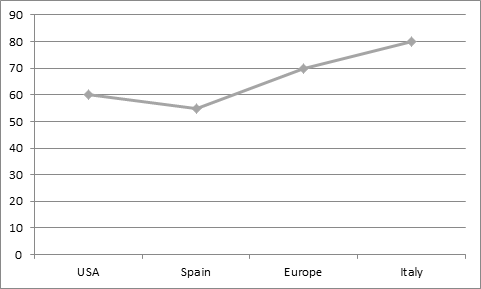
Hospitals
In Europe
European Ophtalmology Clinic
South West Acute Hospital
European Medical Center
Hospital Center Jacques Lacarin
Hospital Center Private De L'europe
In Worldwide
National Jewish Health Hospital
Mayo Clinic
Cleveland Clinic
Massachusetts General Hospital
UCSF Medical Center
University of Michigan Hospitals and Health Centers
Barnes-Jewish Hospital
Penn Presbyterian Medical Center
UCLA Medical Center
Johns Hopkins Hospital
Duke University Hospital
UC San Diego Health-UC San Diego Medical Center
Houston Methodist Hospital
Scripps Green Hospital
New York-Presbyterian Hospital
University of Alabama at Birmingham Hospital
Yale-New Haven Hospital
Major COPD Research Associations in Europe
European Respiratory Society
Forum of International Respiratory Societies
British Lung Foundation
Major COPD Research Associations around Globe
Alpha-1 Foundation
American Association for Respiratory Care
American College of Chest Physicians
American College of Emergency Physicians
American College of Physicians
American Lung Association
Canadian Lung Association (CLA)
COPD Foundation
COPD Patient Organization of Vietnam
COPD Patients Club Kyrgyzstan
COPD Club of Northern Thailand
Asian Pacific Society of Respirology
Chinese COPD Patient Education Organization
Conference Highlights
- Chronic Obstructive Pulmonary Disease
- Asthma and COPD
- Pulmonary Hypertension
- COPD Exacerbations
- Lung Cancer
- Pneumonia and COPD
- Pulmonary Rehabilitation
- Tuberculosis and COPD
- COPD Therapeutics
- Epidemiology of COPD
- Pathophysiology of COPD
- Drug Discovery of COPD
- Genetic risk factor of COPD
- COPD Complications
- Self-Management and Prevention of COPD
- Depression and anxiety in COPD
- Pediatric Pulmonary, Critical care and Sleep
- Pulmonary diseases-treatment and therapies
- COPD and Cardiovascular Diseases
- Case Report
To share your views and research, please click here to register for the Conference.
To Collaborate Scientific Professionals around the World
| Conference Date | November 18-19, 2019 | ||
| Sponsors & Exhibitors |
|
||
| Speaker Opportunity Closed | |||
| Poster Opportunity Closed | Click Here to View | ||
Useful Links
Special Issues
All accepted abstracts will be published in respective Our International Journals.
- Journal of Pulmonary & Respiratory Medicine
- Journal of Clinical Respiratory Diseases and Care
- Journal of Lung Diseases & Treatment
Abstracts will be provided with Digital Object Identifier by



























